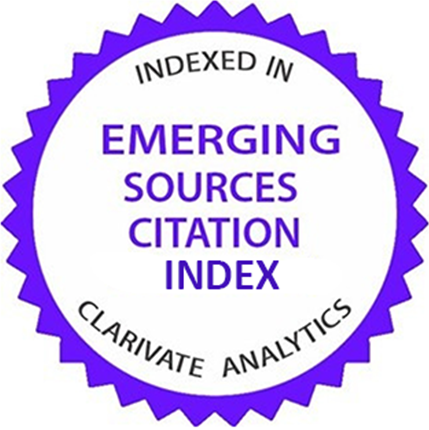Evaluation of intoxication in patients with acute impaired consciousness using rapid urine test tape; a diagnostic accuracy study
Abstract
Objective: Determining the exact underlying etiology of loss of consciousness (LOC) can become a real challenge for physicians due to the broadness of differential diagnoses. The current study aimed to assess the accuracy of a commercially available strip for urine drug screening, in patients presenting with LOC. Methods: One hundred fifty patients with LOC were enrolled in the current cross-sectional study. The diagnostic accuracy of a multidrug urinary strip rapid test was evaluated in comparison to blood analysis as the reference test, and the screening performance characteristics of the rapid test for each substance were estimated. Results: The average age of patients was 46.21±18.59 years (72.67% male). The most frequent false positive results of the test were related to Benzodiazepine (21.5%), Methamphetamine (7.5%), and Tramadol (5.4%), respectively. The screening performance characteristics of the test tape were the best in detection of Amitriptyline with 100.0% (95% CI: 30.99 – 100.0) sensitivity, Cocaine with 100.0% (95% CI: 5.46 – 100.0) sensitivity, and Methadone with 91.54% (95% CI: 81.88 – 96.51) sensitivity, respectively. Conclusion: The current study reveals that employing a urinary strip test for detecting drug intoxication in the setting of emergency department can lead to significant false positive and negative results. Accordingly, relying on a urine drug screen to determine the underlying etiology of LOC should be done with caution.
2. Völk S, Koedel U, Pfister HW, Schwankhart R, Op den Winkel M, Mühlbauer K, et al. Impaired Consciousness in the Emergency Department. Eur Neurol. 2018;80(3-4):179-86.
3. Safari S, Khasraghi ZS, Chegeni MA, Ghabousian A, Amini A. The ability of Canadian Syncope risk score in differentiating cardiogenic and non-cardiogenic syncope; a cross-sectional study. Am J Emerg Med. 2021;50:675-8.
4. Ala A, Vahdati SS, Maroufi P, Hafezan S, Ansari N, Ghabousian A. Philadelphia versus Miami-J cervical collar's impact on pulmonary function. Am J Emerg Med. 2021;43:59-61.
5. Forsberg S, Höjer J, Enander C, Ludwigs U. Coma and impaired consciousness in the emergency room: characteristics of poisoning versus other causes. Emerg Med J. 2009;26(2):100-2.
6. Bahji A, Hargreaves T, Finch S. Assessing the utility of drug screening in the emergency: a short report. BMJ Open Qual. 2018;7(4):e000414.
7. Jones AL, Rankin JA, Then KL. Drug Overdose, Loss of Consciousness, and Compartment Syndrome: A Life-Threatening Combination. J Emerg Nurs. 2020;46(3):294-301.
8. Sivilotti ML. Flumazenil, naloxone and the 'coma cocktail'. Br J Clin Pharmacol. 2016;81(3):428-36.
9. Cooksley T, Rose S, Holland M. A systematic approach to the unconscious patient. Clin Med (Lond). 2018;18(1):88-92.
10. Perrone J, De Roos F, Jayaraman S, Hollander JE. Drug screening versus history in detection of substance use in ED psychiatric patients. Am J Emerg Med. 2001;19(1):49-51.
11. Fa A-M, Am A, Ar R, editors. Efficiency Evaluation of Urine Collection Vessels with Impeded Urine Adulteration/Substance of Abuse (SOA) Rapid Detection Test Strips2017.
12. Stellpflug SJ, Cole JB, Greller HA. Urine Drug Screens in the Emergency Department: The Best Test May Be No Test at All. J Emerg Nurs. 2020;46(6):923-31.
13. Moeller KE, Kissack JC, Atayee RS, Lee KC. Clinical Interpretation of Urine Drug Tests: What Clinicians Need to Know About Urine Drug Screens. Mayo Clin Proc. 2017;92(5):774-96.
14. Ferrer Bosch N, Martínez Sánchez L, Trenchs Sainz de la Maza V, Velasco Rodríguez J, García González E, Luaces Cubells C. [Use of urine drug screening in the emergency department of a paediatric hospital]. An Pediatr (Engl Ed). 2018;88(1):19-23.
15. Rogers SC, Pruitt CW, Crouch DJ, Caravati EM. Rapid urine drug screens: diphenhydramine and methadone cross-reactivity. Pediatr Emerg Care. 2010;26(9):665-6.
16. Algren DA, Christian MR. Buyer Beware: Pitfalls in Toxicology Laboratory Testing. Mo Med. 2015;112(3):206-10.
17. Stout PR, Klette KL, Horn CK. Evaluation of ephedrine, pseudoephedrine and phenylpropanolamine concentrations in human urine samples and a comparison of the specificity of DRI amphetamines and Abuscreen online (KIMS) amphetamines screening immunoassays. J Forensic Sci. 2004;49(1):160-4.
18. Cone EJ, Bigelow GE, Herrmann ES, Mitchell JM, LoDico C, Flegel R, et al. Non-smoker exposure to secondhand cannabis smoke. I. Urine screening and confirmation results. J Anal Toxicol. 2015;39(1):1-12.
19. Valentine JL, Middleton R, Sparks C. Identification of urinary benzodiazepines and their metabolites: comparison of automated HPLC and GC-MS after immunoassay screening of clinical specimens. J Anal Toxicol. 1996;20(6):416-24.
20. Nasky KM, Cowan GL, Knittel DR. False-Positive Urine Screening for Benzodiazepines: An Association with Sertraline?: A Two-year Retrospective Chart Analysis. Psychiatry (Edgmont). 2009;6(7):36-9.
| Files | ||
| Issue | Vol 6 No 4 (2022): Autumn (October) | |
| Section | Original article | |
| DOI | 10.18502/fem.v6i4.10434 | |
| Keywords | ||
| Diagnosis Hospital Emergency Service Illicit Drugs Substance Abuse Detection | ||
| Rights and permissions | |

|
This work is licensed under a Creative Commons Attribution-NonCommercial 4.0 International License. |










